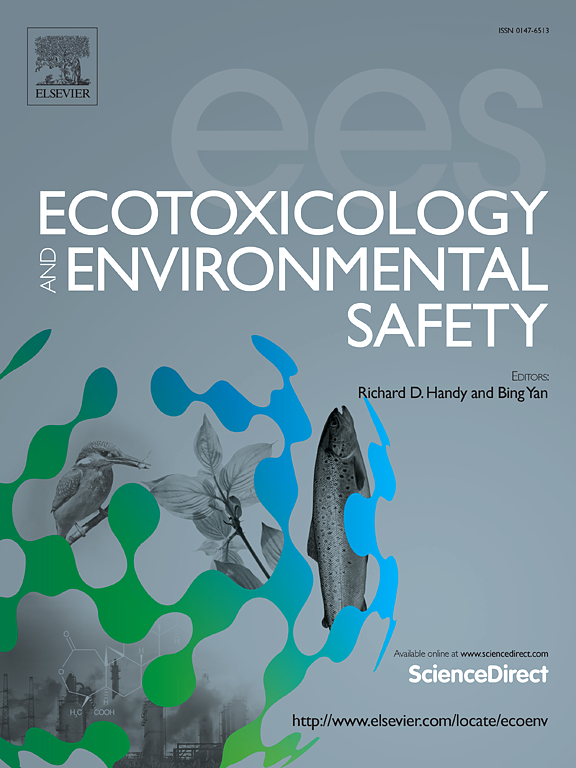Prenatal exposure to polycyclic aromatic hydrocarbons and blood pressure in the early life of children
IF 6.2
2区 环境科学与生态学
Q1 ENVIRONMENTAL SCIENCES
引用次数: 0
Abstract
Exposure to polycyclic aromatic hydrocarbons (PAHs) has been associated with many adverse health outcomes. This cohort study investigates the association between prenatal exposure to PAHs and blood pressure in children aged 4–6 years. Conducted in Shenyang, China, the study includes 5642 children whose mothers provided urine samples in the third trimester, which were analyzed for PAH metabolites. Children’s blood pressure indicators, including systolic blood pressure (SBP), diastolic blood pressure (DBP), mean arterial pressure (MAP), and pulse pressure (PP), were measured during follow-up. Multivariable regression models, adjusted for key confounders, were used to explore associations between PAH metabolites and blood pressure. Additionally, we applied quantile g-computation (g-comp) and Bayesian kernel machine regression (BKMR) to assess the combined and interaction effects of multiple PAH metabolites. Prenatal exposure to specific PAH metabolites showed significant associations with blood pressure parameters. 2-hydroxynaphthalene, 3-hydroxyfluorene, 9-hydroxyphenanthrene, and 1-hydroxypyrene were positively linked to SBP. For DBP, 2-hydroxynaphthalene, 1-hydroxynaphthalene, and total PAH metabolites revealed strong associations. PP was significantly linked to 3-Hydroxyfluorene, while MAP showed consistent associations with 2-hydroxynaphthalene, 1-hydroxynaphthalene, 9-hydroxyphenanthrene, and 1-hydroxypyrene. G-comp analysis revealed significant associations between prenatal PAH exposure and increases in SBP, DBP, and MAP, with no effect on PP. BKMR showed no strong evidence for SBP or DBP but suggested potential positive associations for PP and MAP at higher exposure quantiles, indicating nuanced, exposure-dependent relationships with blood pressure outcomes. This study, being one of the first to explore these associations in children, provides important insights into the potential long-term health impacts of prenatal PAH exposure on childhood cardiovascular health.
求助全文
约1分钟内获得全文
求助全文
来源期刊
CiteScore
12.10
自引率
5.90%
发文量
1234
审稿时长
88 days
期刊介绍:
Ecotoxicology and Environmental Safety is a multi-disciplinary journal that focuses on understanding the exposure and effects of environmental contamination on organisms including human health. The scope of the journal covers three main themes. The topics within these themes, indicated below, include (but are not limited to) the following: Ecotoxicology、Environmental Chemistry、Environmental Safety etc.

 求助内容:
求助内容: 应助结果提醒方式:
应助结果提醒方式:


